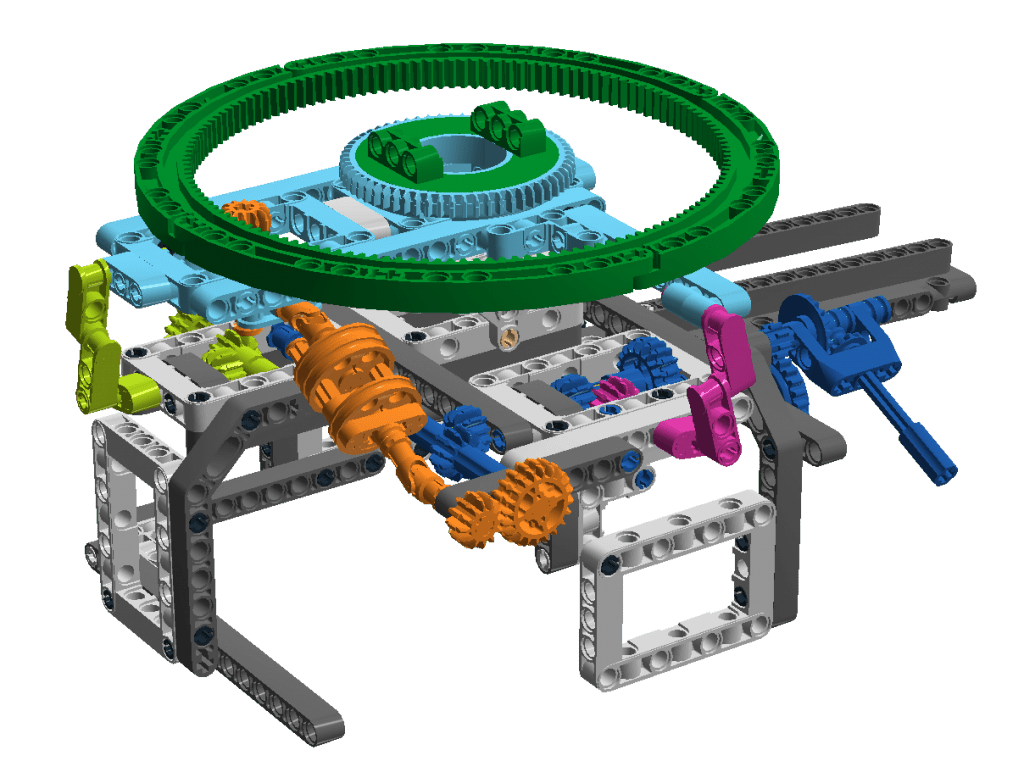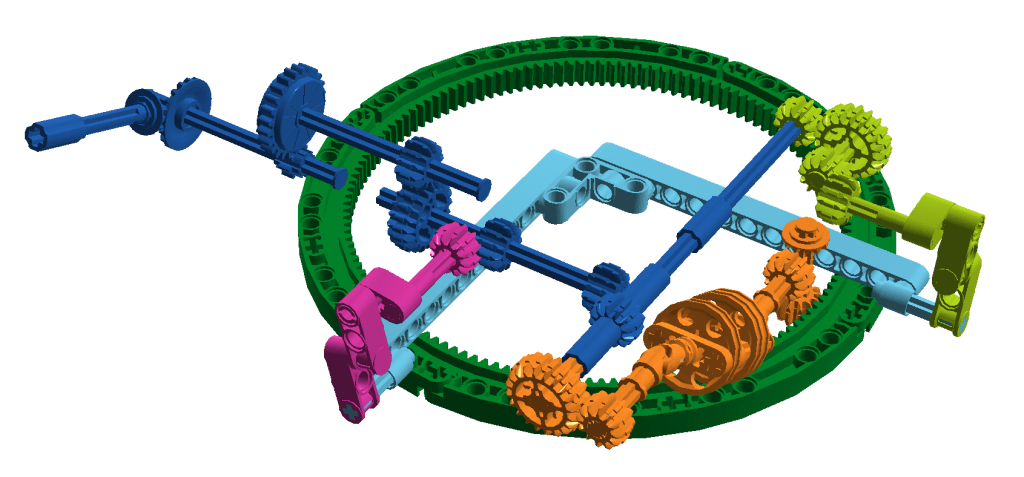Time for another Mechanical Monday! Today in the spotlight? The Tilting Table Mechanism!
The Tilting Table Mechanism is used in our GBC 21 Mine Factory and GBC 45 Stunt Circus. What is the use you ask? Not that hard: entertainment! As the table tilts and turns, gravity pulls the GBC balls into different directions creating a suspense before they finally make their way to the center of the Tilting Table. The table is unique in its working mechanism: where other tables may rotate or tilt, this table combines both actions. But that’s not all: the tilting of the table is off sync. When the table goes up in the Y-axis, it may go down in the X-axis, but it may also go up in the X-axis or anything in between! In other words: the table is constantly moving in all sorts of directions, making it unpredictable when the GBC balls will finally find the center! Cherry on top. The GBC 45 Stunt Circus even includes a fourth action adding rotating spinners on the moving table deck. How cool!
But how does it work? How can we enable the table to go tilting and turning in different directions at the same time? Let’s find out!
Tilting the Table

In this image the mechanism of the Tilting Table (without the table itself) can be seen. Different colors are used for different components of the mechanism: in dark blue the input is depicted, the pink and lime green components are used for tilting the table, while the orange components are used for rotating the table. The table itself (output) is attached on the dark green components.
The light and dark grey construction lifts the Tilting Table Mechanism up from the ground so we can connect it to the rest of the GBC. Since they make it harder to clearly depict and understand the exact working mechanism of the Tilting Table, we’ll continue with a picture where the grey beams are all left out. Also we depicted the mechanism upside-down to make it easier to look at.

As written above, the entire mechanism starts with the dark blue input. Multiple (bevel) gears and axles cooperate together with two different purposes: first it is used for activating the different other components (pink, orange and lime green), and second it is used for slowing the input down. By slowing down the input impuls, a new default speed is created enabling the different components of the mechanism to work with a perfect speed for an off-sync tilting (more on that later!).
Next up: the pink and lime green levers. As the input axles turn, bevel gears are rotated, leading to a rotation of the axle to which the levers are connected. The levers consist out of three beams connected through axles (two studs long). These three beams each have their own function. The first beam (looking from the input) is rotated, making the second and third beam go up, sideways and down just a bit. Since the third beam is connected to the long arms (light blue), a small movement in the lever is enlarged, causing a bigger movement of the table. Since the pink and lime green levers are at a perpendicular (90 degrees) angle) the table will move in two directions, creating an Y-axis and an X-axis. As the table is pushed up and down at two different sides, there might be some friction at the levers. Usually the lever would just go up and down, but now it also has to be able to make small sideways movements. That’s why the second beam in the lever was installed. Since this beam is connected with an axis on both sides, the level is not entirely solid, allowing small movements in different directions and therefore enabling the table to tilt in different directions with working levels!
Rotating the Table
What makes this table quite unique is the ability to also rotate. To accomplish this the drive of the rotation had to come from the side. Only 1 problem: the table moves up and down… Using multiple universal joints and a sliding linear axle mechanism allowed us to have a dynamic axle which moves together with the table and moves rotates the table. (Orange).
Note the different gear ratios in the driving axle. This makes sure that the X and Y movements will always be off-sync, creating a dynamic movement. Here are the speeds relative to each other. Dark blue slows down –> pink speed 1, –> lime green 2/3th –> orange 1 1/3th speed
Rotating attachments on the Table
We encourage builders for modification of the turntable platform to create their own cool layouts. For the GBC 45 Stunt Circus we also included rotating spinners to push the GBC Balls in even more unpredictable ways. This is accomplished by adding a gear which interacts with the light blue big turntable gear. As the table move, and the base doesn’t, it will create a motion which we can connect our spinning attachments to.
See both GBCs which use the Tilting Table Mechanism down below. You can also check the individual product pages where you can even learn more about these GBCs.
